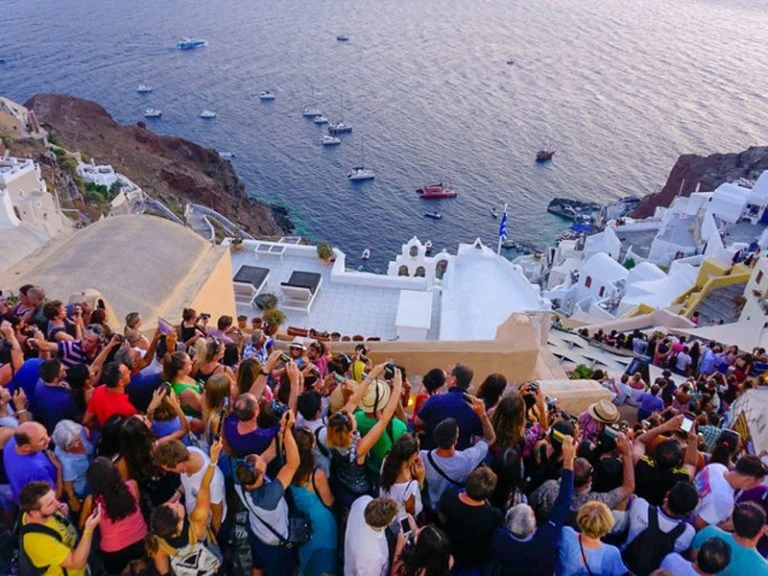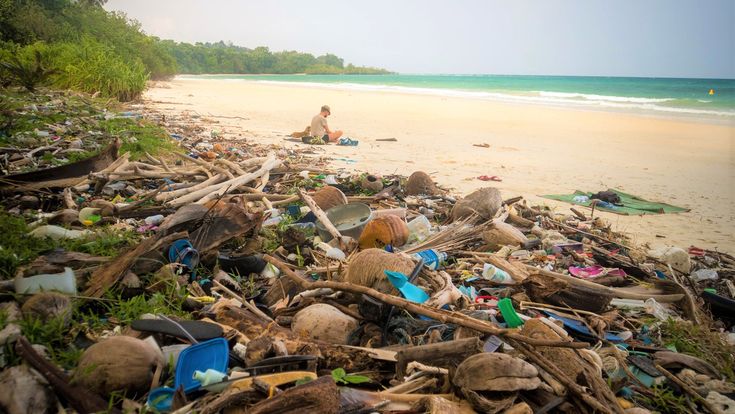
Top 10 Countries That Could Ban Tourists Soon: Overtourism has become a major global issue, where tourism is damaging the environments and cultural heritage of some of the most beloved destinations worldwide. Many countries are grappling with overcrowded cities, overtaxed infrastructure, and environmental destruction as a result of mass tourism. In response, some nations have begun to explore drastic measures, including potential tourist bans, to protect their resources and local communities. In this article, we’ll explore the top 10 countries that could ban tourists soon due to overcrowding and environmental concerns, providing insights into the causes and what travelers can do to help. This is a growing issue for anyone who loves to travel, so it’s important to understand how we can contribute to sustainable tourism.
Top 10 Countries That Could Ban Tourists Soon
| Country | Concerns | Current Measures | Potential Tourist Restrictions |
|---|---|---|---|
| Spain | Overcrowding in cities like Barcelona, Mallorca, Ibiza | Protests against tourism, entry fees | Tourist caps, restrictions on short-term rentals |
| Italy | Overcrowding in Venice, Florence, Rome | Cruise bans, tourist taxes | Visitor caps, restrictions on short-term rentals |
| France | Overcrowding in Paris, Nice | Tourist taxes, visitor caps | Entry restrictions for certain tourist areas |
| Greece | Water scarcity, environmental degradation | Limiting cruise arrivals, sustainable tourism practices | Visitor caps, promoting lesser-known destinations |
| Thailand | Ecosystem damage, overcrowding in Ko Phi Phi | Visitor caps at Maya Bay | Implementing visitor limits at popular sites |
| Indonesia (Bali) | Single-use plastic, tourism impacts | $9 tourist tax, behavior rules | Potential entry fees, restrictions to cultural sites |
| Japan | Overcrowding in Kyoto, Mount Fuji | Timed entries, fines for disruptive tourists | Visitor caps and promotions for lesser-known areas |
| Croatia | Overcrowding in Dubrovnik | Cruise ship limits, fewer souvenir stands | Limiting tourist numbers to preserve heritage |
| Philippines (Boracay) | Pollution, overcrowding | Six-month closure for environmental cleanup | Ongoing visitor restrictions |
| Bhutan | Sustainability, environmental concerns | High-value, low-impact tourism policy | Tourist fees to control numbers |
Why Is Overtourism Becoming a Problem?
Tourism is one of the world’s largest industries, but when too many people visit a single location, the negative impact can be overwhelming. Overcrowding, pollution, destruction of wildlife habitats, and strain on local resources such as water, energy, and waste management are just some of the consequences of over-tourism.
Not only does it affect the environment, but it also disrupts the lives of local residents. When their streets and neighborhoods are flooded with tourists, residents often feel alienated and frustrated. The balance between tourism revenue and local quality of life is delicate, and when the scales tip too far towards tourism, the impact can be disastrous. This is why many countries are starting to consider restrictions to protect their culture and ecosystems for future generations.

Top 10 Countries That Could Ban Tourists Soon
1. Spain: Barcelona, Mallorca, and Ibiza
Spain has become a hotspot for tourists, especially in cities like Barcelona and islands like Ibiza and Mallorca. Unfortunately, these areas have struggled with overcrowding, resulting in protests from residents who feel overwhelmed by the influx of visitors. As a response, Spain is exploring options like tourist caps, entry fees, and stricter regulations on short-term rentals.
Practical Advice: Consider visiting smaller, less-traveled Spanish cities such as Granada or Zaragoza, which offer a rich cultural experience without the massive crowds.
2. Italy: Venice, Florence, and Rome
Italy, with its rich cultural history, is a dream destination for many travelers. However, cities like Venice and Rome face serious issues with overcrowding. Venice, in particular, is considering restrictions on large cruise ships and tourist caps at famous landmarks. Measures are also being taken in Rome and Florence to reduce the number of tourists flooding their historic streets.
Practical Advice: For a more serene Italian experience, consider exploring towns like Siena or Lecce—gems that offer stunning architecture and local charm without the chaos of mass tourism.
3. France: Paris and Nice
Overtourism in France has led to residents and businesses protesting against the influx of tourists. Paris and Nice, popular for their culture and beaches, are particularly affected by overcrowding. To combat this, the government is considering tourist taxes and visitor limits for specific areas.
Practical Advice: Explore lesser-known French destinations such as Aix-en-Provence or Cannes, where you can enjoy the local flavor without the crowds.
4. Greece: Santorini, Mykonos
The iconic Greek islands of Santorini and Mykonos have suffered from environmental degradation and water shortages due to excessive tourism. The Greek government is now taking steps to limit the number of tourists visiting during peak seasons, including possible visitor caps and promoting sustainable tourism practices.
Practical Advice: Discover quieter Greek islands like Naxos or Crete, which are beautiful and offer authentic Greek culture without overwhelming tourism.

5. Thailand: Ko Phi Phi
Thailand’s Ko Phi Phi is famous for its crystal-clear waters, but it has also seen significant damage from tourism. Maya Bay was temporarily closed to allow its ecosystem to recover, and similar restrictions may be enforced on other sites like Ko Phi Phi.
Practical Advice: Opt for less popular islands like Koh Lanta or Koh Tao to avoid the tourist crowds while enjoying the beauty of Thailand.
6. Indonesia (Bali)
Bali has long been one of the top tourist destinations in Southeast Asia. However, environmental pollution, overcrowding, and the growing demand for single-use plastics have put immense pressure on the island. Bali has already implemented a tourist tax and behavioral rules, and more restrictions may be on the horizon.
Practical Advice: Visit Lombok or Flores, which offer a similar experience to Bali with fewer crowds and greater environmental preservation.
7. Japan: Kyoto and Mount Fuji
With over 30 million visitors annually, Japan is experiencing severe overcrowding at cultural sites like Kyoto and Mount Fuji. Timed entry systems, visitor caps, and fines for disruptive tourists are just some of the measures being considered to protect these locations.
Practical Advice: Consider visiting cities like Nara or Hiroshima for a more relaxed, yet equally cultural experience.
8. Croatia: Dubrovnik
Croatia’s historic city of Dubrovnik is overwhelmed by tourists, many of whom visit due to its appearance in Game of Thrones. In response, the city has limited the number of cruise ships and souvenir stands to maintain its cultural heritage.
Practical Advice: Visit other Croatian cities like Split or Zadar that also offer stunning architecture and historical significance without the crowds.
9. Philippines (Boracay)
Boracay is an island that faced environmental collapse due to overcrowding and pollution. It was closed for six months in 2018 to allow for cleanup and restoration. Since reopening, the government continues to regulate visitor numbers to ensure the island’s health.
Practical Advice: Explore alternative islands like Siargao or Palawan for beautiful beaches and pristine nature.
10. Bhutan
Bhutan has long maintained a high-value, low-impact tourism policy, requiring visitors to pay a daily fee to enter the country. This approach helps limit the number of tourists and ensures the preservation of the country’s unique culture and environment.
Practical Advice: Be prepared for the daily fee, and consider other high-value destinations that prioritize sustainability.

Sustainable Tourism Tips for Travelers
- Respect local cultures: Always be mindful of local customs, traditions, and dress codes. In some countries, cultural sensitivity is crucial for maintaining positive relations with locals.
- Travel during the off-season: If possible, plan your trip during the shoulder seasons or off-peak months to reduce the strain on local resources and avoid overcrowding.
- Opt for eco-friendly accommodations: Look for hotels, hostels, or resorts that promote sustainable practices, such as energy efficiency and waste reduction.
- Reduce your carbon footprint: Choose modes of transport that are environmentally friendly, such as trains or buses, and limit flights whenever possible.
The Economic Impact of Overtourism
While tourism is a major economic driver for many countries, the economic benefits of mass tourism often come with unintended consequences. Overcrowding can lead to higher living costs for locals, environmental degradation, and reliance on industries that damage the environment. By limiting tourism, countries can shift towards more sustainable forms of income, such as promoting eco-tourism or other locally-driven enterprises that don’t compromise the environment.
Japan’s Debt Is Shrinking, but Experts Warn the Real Economic Trouble Is Just Beginning
No Warning, No Flights—U.S. Airline Collapse Strands Travelers Across the Country
Magic Kingdom Says Goodbye—Disney Permanently Closes These Fan-Favourite Attractions











